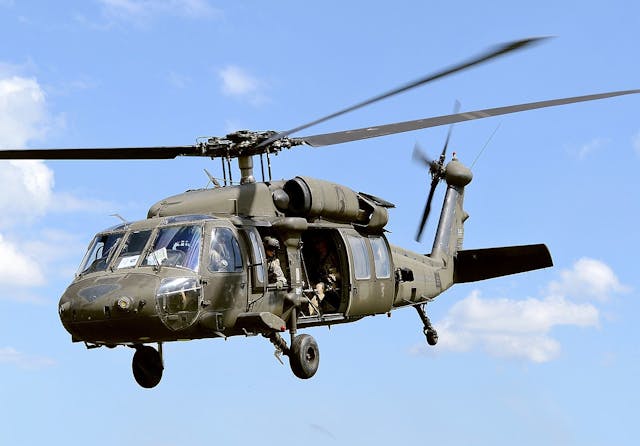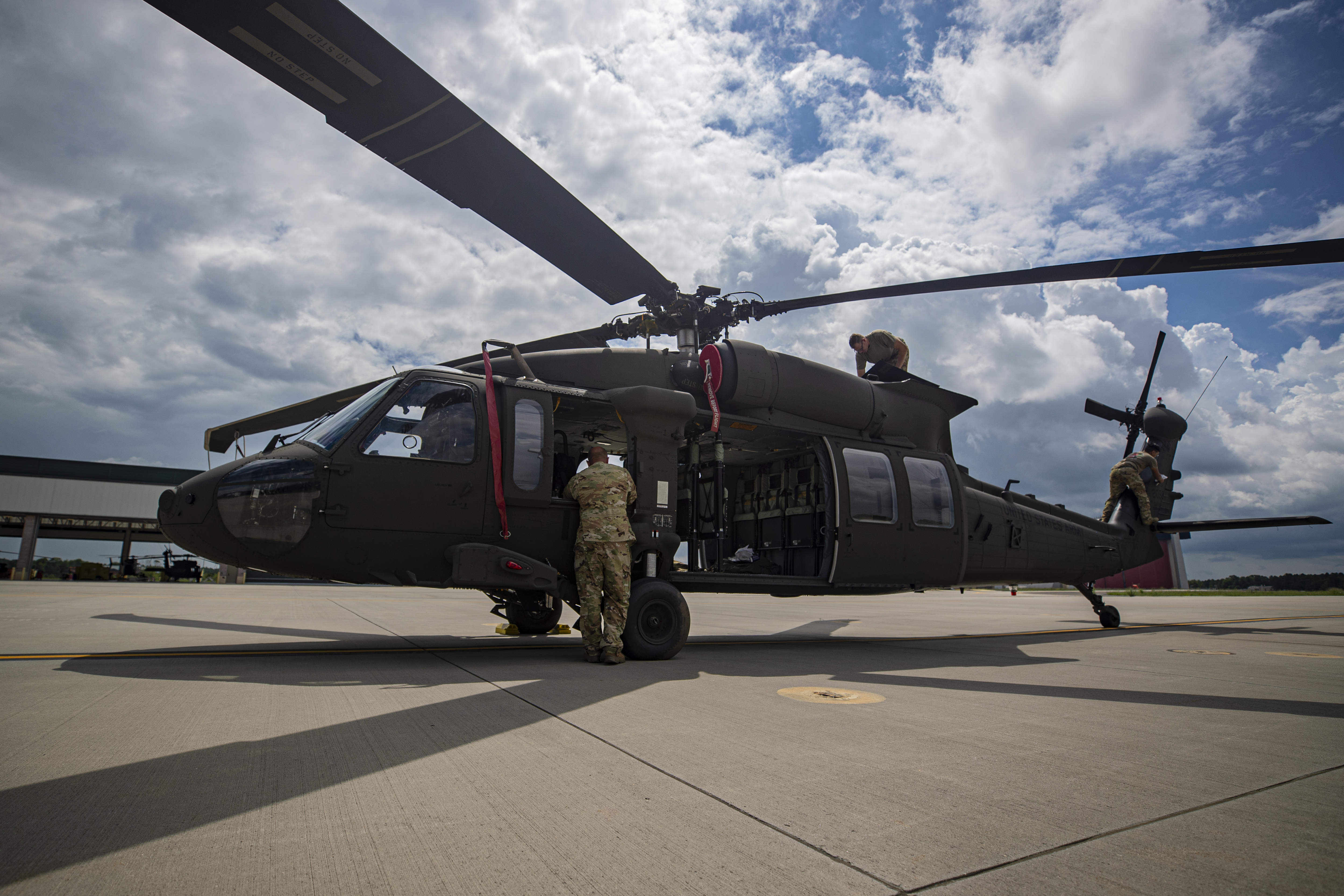UH 60 Technical Specifications and Performance Review
UH 60 Technical Specifications and Performance Review
Blog Article
Checking Out the Ingenious Technology Behind Airplane Design and Design
The field of airplane style and design is seeing a transformative shift driven by cutting-edge technologies that boost sustainability, performance, and performance. As the industry grapples with the difficulties of ecological responsibility, developments in sustainable air travel technologies guarantee to improve the future.
Advanced Products in Aircraft Design
Just how can the assimilation of advanced materials change airplane design? The unification of sophisticated materials, such as carbon fiber composites, titanium alloys, and advanced porcelains, plays a critical function in enhancing airplane performance and efficiency. These products use premium strength-to-weight proportions, enabling makers to decrease total aircraft weight without endangering structural honesty. This decrease in weight directly adds to enhanced gas effectiveness and increased payload capability.
In addition, advanced materials display boosted resistance to corrosion and fatigue, leading to lower maintenance expenses and prolonged solution life. The usage of titanium in crucial parts helps withstand extreme temperatures and stress and anxieties, while carbon fiber composites give adaptability in layout and production processes. This flexibility permits more aerodynamic shapes, adding to premium efficiency characteristics.
Moreover, the integration of wise products, which can transform buildings in response to external stimuli, opens brand-new methods for flexible systems in aircraft design. uh 60. These developments assure not only to enhance safety and operational efficiency however additionally to add to sustainability initiatives by lessening environmental impact through reduced emissions. In summary, advanced materials are redefining the landscape of airplane style, leading the way for a lot more effective, durable, and ecologically friendly aeronautics solutions
Aerodynamic Technologies for Effectiveness
Wind resistant advancements play a critical duty in enhancing aircraft performance, substantially influencing fuel intake and total efficiency. Breakthroughs in airfoil style, such as the intro of supercritical wings, permit for optimized lift-to-drag ratios, minimizing drag at transonic speeds. These advancements make it possible for airplane to keep higher rates with reduced fuel expenditure, directly influencing operational expenses and ecological sustainability.
Additionally, the integration of winglets has actually proven reliable in mitigating vortex-induced drag at the ideas of wings, better enhancing fuel performance - uh 60. This design modification causes a decrease in wake disturbance, adding to enhanced wind resistant efficiency throughout cruise conditions

Furthermore, computational liquid characteristics (CFD) devices have actually revolutionized the screening and improvement of wind resistant shapes, enabling accurate simulations of air flow around airplane (uh 60). This makes it possible for designers to introduce continuously, making sure that modern-day airplane not just fulfill regulatory requirements yet additionally press the boundaries of effectiveness in aeronautics

Role of Computer System Simulations
Computer system simulations have actually ended up being an important tool in the field of airplane layout, allowing engineers to conduct comprehensive analyses and optimizations of various design facets. These simulations permit for the virtual testing of aerodynamic homes, architectural honesty, and performance metrics long before physical prototypes are built. By employing computational fluid dynamics (CFD) and finite element analysis (FEA), designers can predict just how air moves around the airplane and just visit our website how various materials will certainly react to stress and strain.
Moreover, computer simulations facilitate the expedition of a wide variety of situations and variables, speeding up the style process and lowering prices associated with physical testing. This capability not only boosts the accuracy of predictions regarding airplane actions however likewise offers understandings right into prospective design improvements that could not be promptly evident with traditional approaches.

Furthermore, simulations help make certain conformity with strict safety laws by enabling engineers to recognize and correct potential problems early in the design stage. The combination of simulation technologies right into the aircraft layout process emphasizes the considerable advancements in design practices, eventually adding to the growth of safer, extra efficient, and eco friendly airplane.
Artificial Knowledge in Engineering
Expert system (AI) is transforming the engineering landscape, particularly in aircraft layout, by boosting decision-making procedures and enhancing layout process. With device learning algorithms, AI can assess substantial datasets, discovering patterns and insights that inform layout options and improve overall performance.
AI applications in airplane design consist of generative style, where algorithms develop numerous style alternatives why not try this out based upon specified parameters, permitting engineers to evaluate a more comprehensive series of possibilities. This not just accelerates the layout phase but additionally guarantees that the end products meet rigorous performance and safety requirements.
Furthermore, AI-driven anticipating analytics help with upkeep scheduling by analyzing historical information and anticipating potential failures. This positive method lowers downtime and improves airplane reliability.
In addition, AI aids in simulation and modeling, making it possible for engineers to check layouts under different problems without the need for physical prototypes. This capacity shortens advancement timelines and decreases costs connected with traditional testing approaches.
Sustainable Air Travel Technologies
The answer lies in the fostering of sustainable air travel innovations that focus on effectiveness and minimize carbon exhausts. Technologies such as lasting aeronautics gas (SAFs), which are acquired from eco-friendly sources, have actually emerged as an important element in accomplishing lower lifecycle discharges.
Furthermore, developments in aircraft design, such as the growth of lighter products and more aerodynamically effective forms, add to boosted fuel efficiency. Electric and hybrid propulsion systems are likewise getting grip, offering a pathway to decrease reliance on fossil gas and decrease greenhouse gas exhausts.
The integration of these technologies is supported by regulative structures and market cooperations intended at establishing ambitious sustainability targets. Electronic tools like information analytics and man-made intelligence can maximize flight procedures, additionally enhancing gas efficiency. By welcoming sustainable practices and innovations, the aviation sector can not only fulfill the growing need for flight yet likewise play a crucial function in dealing with climate adjustment, making certain a much more sustainable future for air transportation.
Conclusion
The merging of sophisticated materials, aerodynamic technologies, and sophisticated modern technologies marks a significant advancement in airplane style and engineering. The assimilation redirected here of carbon fiber composites, titanium alloys, and AI-driven processes not just enhances performance and effectiveness yet also enhances operations and predictive maintenance. The recurring growth of sustainable aviation modern technologies highlights a dedication to environmental duty, leading the means for a greener future in air travel. This continual innovation will certainly shape the industry's trajectory for many years to find.

Computer system simulations have come to be an important device in the field of aircraft style, making it possible for engineers to carry out thorough analyses and optimizations of different layout facets.The convergence of advanced products, wind resistant developments, and sophisticated technologies marks a considerable advancement in airplane design and engineering.
Report this page